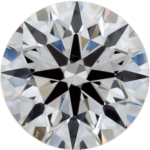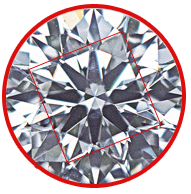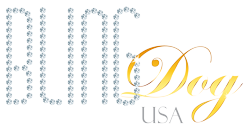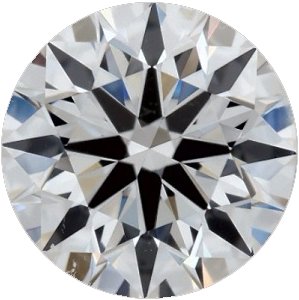
Good question! Let’s explore the basics of what affects the brilliance and the pricing for that maximum sparkle at an optimum price! Choosing a diamond ring or earrings for beauty and style is different than investing in diamonds for a greater return in the future. Some high-end attributes of diamonds are simply not visible to the naked eye and would have little value for a beautiful piece of jewelry. But, a few extra dollars well placed in certain attributes can make a big difference in that sparkle you want for that eye popping Bling!
There are four basic area you should be familiar with when choosing a diamond. They are the four “C’s” — cut, color, clarity and carat. Each “C” will affects the brilliance and the value of your diamond.
For the quick reader, here’s a summary. Bottom line – it’s the flowing through and return of LIGHT that gives a diamond that wonderful “sparkle”. Anything impeding that light diminishes the brilliance.
Cut
A well cut diamond optimizes the light coming out the top of the stone. Light comes into the stone from the top and from the bottom. Through correct angles of refraction, light returns from the top back out the top. It also passes from the bottom and also up out the top. A poor cut diamond will not maximize the return of the available light. For a round cut stone and a rough guesstimate, looking from the side, you want approximately 1/4 -1/3 (29%) of the stone above the girdle and 2/3 – 3/4 (71%) of the stone making a straight downward cone below the
girdle. The Girdle is the outer edge of the stone and should not be too thick or too thin when looking from the side. It should be just barely thick enough to hold the pressure of the setting prongs holding the stone. (See diagram.)

Another great trick is to look from the top. First look for roundness. Second look at the table, the top most part of the cut. It should be a near perfect square. A slight inward curvature is okay and in some circles, preferred. (See red example.)


Note on Cut: The main diamonds in a piece of jewelry are usually cut as “brilliant” (or similar reflective style) not “straight”. A brilliant cut usually returns the most light. The smaller side diamonds (sometimes called Baguettes) are frequently cut in the straight style. Because of the small size they are difficult to cut as brilliant and are acceptable in most settings as side or cluster diamonds.
Color
Diamond color goes from yellow to ultra-white. (Most black diamonds are industrial grade for cutting.) The rarer the color the more value it holds, at both color extremes. But for “sparkle”, a beautiful slight yellow and into the medium white range offer an excellent value. Staying in the GIA color scale range of G – L should provide a color brilliance to be happy with. G is whiter and L slightly yellow. Look through the bottom of the stone to judge color. But in this color range of G to L, the difference will be hard to tell without color comparison stones. The full scale goes from D to Z.

Clarity
Few diamonds are crystal clear. Diamonds are just highly compressed carbon made deep in the earth, so most are going to have clouds, bubbles, dust, cracks and debris. Clarity is judged by what can be seen with a 10x magnifier looking from the top. The fewer obstructions (inclusions) that are seen, the more light will pass through and the greater the value. I always cheat and look from the side and bottom too. Once I identify an inclusion and can’t find it again looking from the top, I’m happy. And, inclusions around the sides are less obstructive than those in the middle of the stone. The typical beautiful brilliant stone for jewelry ranges from VS1 – SI2 on the GIA Clarity Scale, very slight included to sight included 2. My wife’s wedding ring is a VS2 and is gorgeous! A purest will buy a VVS2 or VS1. But I have seen some beautiful stones in the SI2 range with slight inclusions around the sides that give a great sparkle because they have great color and are well cut.

Carat
This is the weight of a diamond. Unless the stone is heavily included (see above), the more a stone weighs the bigger it is, the more light it passes and the more value it has. A typical diamond wedding ring is .25 to 1.00 carats (1/4 carat to 1 full carat). The average is .50 (1/2 carat). (Chart not to scale.)

The GIA Scales shown are the most widely used and accepted. GIA stand for The Gemological Institute of America an independent nonprofit organization that “protects the gem and jewelry buying public through research, education and laboratory services”. I have used their charts in this article and give them full credit. The GIA provides a wonderful public service! For additional information, I would go to their website at GIA.edu.

